Povidlové šátečky, Czech cookies stuffed with sweet & tangy plum butter, so delicious on their own! Powidl crescent cookies are made from cheese pastry, which requires only 3 ingredients.
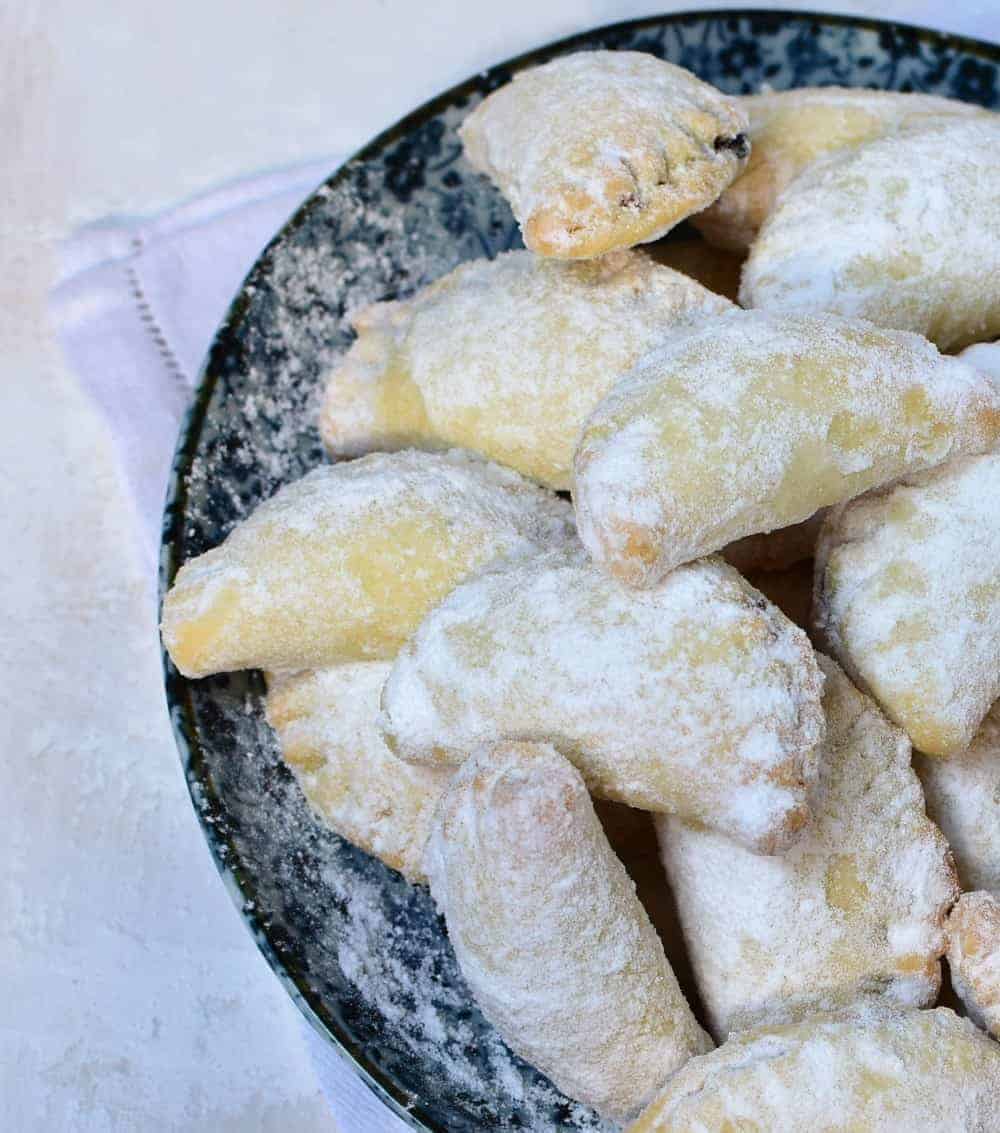
Cheese pastry is one of the most popular kinds of pastry here in the Czech Republic. The main ingredient is „tvaroh“ – in the USA, the best substitute would probably be Farmer´s Cheese for this recipe (more on this later on).
Cheese pastry forms the foundation for a lot of cookies of various shapes and sizes – for instance „koláčky, rohlíčky, šátečky“. We can translate these names into English as kolacky, crescents, scones.
Cookies made from cheese pastry are usually filled with jam, nut, or poppyseed filling.
They are baked in the oven, and then immediately coated in powdered sugar.
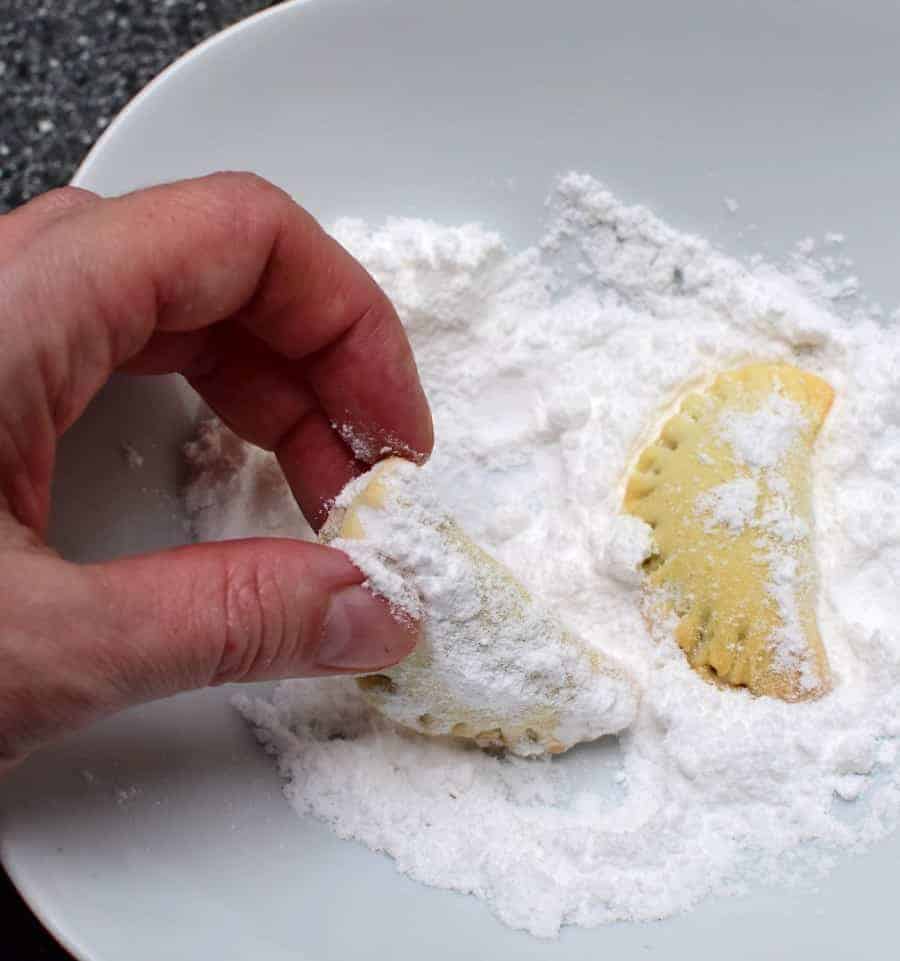
➜ What Is „Tvaroh“ in the Czech Republic?
„Tvaroh“ is a common Czech baking ingredient. It’s a type of unripened cheese usually made from cow´s milk. Tvaroh is white and has a slightly acidic flavor.
There are two basic types of tvaroh in the Czech Republic, cream cheese and solid cheese (freely translated). Cream cheese is called "ve vaničce" and solid cheese "v alobalu".
The thicker (solid) tvaroh cheese is usually used when baking because it contains less fluid. It holds better together when filling the pastry, and it won’t leak as much as the creamier variant.
Learn how to make Czech homemade Tvaroh cheese.

I looked up an ingredient, which would be the best substitute for tvaroh in the USA. I read through baking forums and I think the best substitute for Czech tvaroh for baking is the above-mentioned farmer’s cheese.
If you used mild cream cheese for making cheese pastry instead, you’d need to add more flour for the dough to be easily manipulated.
Let’s stick to farmer’s cheese in this recipe!
➜ Cheese Pastry Instructions
- Put the farmer’s cheese and at room temperature softened butter into a large bowl.
- Mix it with a fork, knead it until it forms a smooth ball.
- Wrap it and freeze it for 20 minutes.
- Roll out the cheese pastry into a thin plate and cut out circles.
- Place a small amount of plum butter in the middle.
- Fold the opposite sides of the circle together, and then press the edges with a fork to seal.
- Bake the cookies for about 20 minutes.
- Cover the cookies with powdered sugar immediately upon taking them out of the oven.
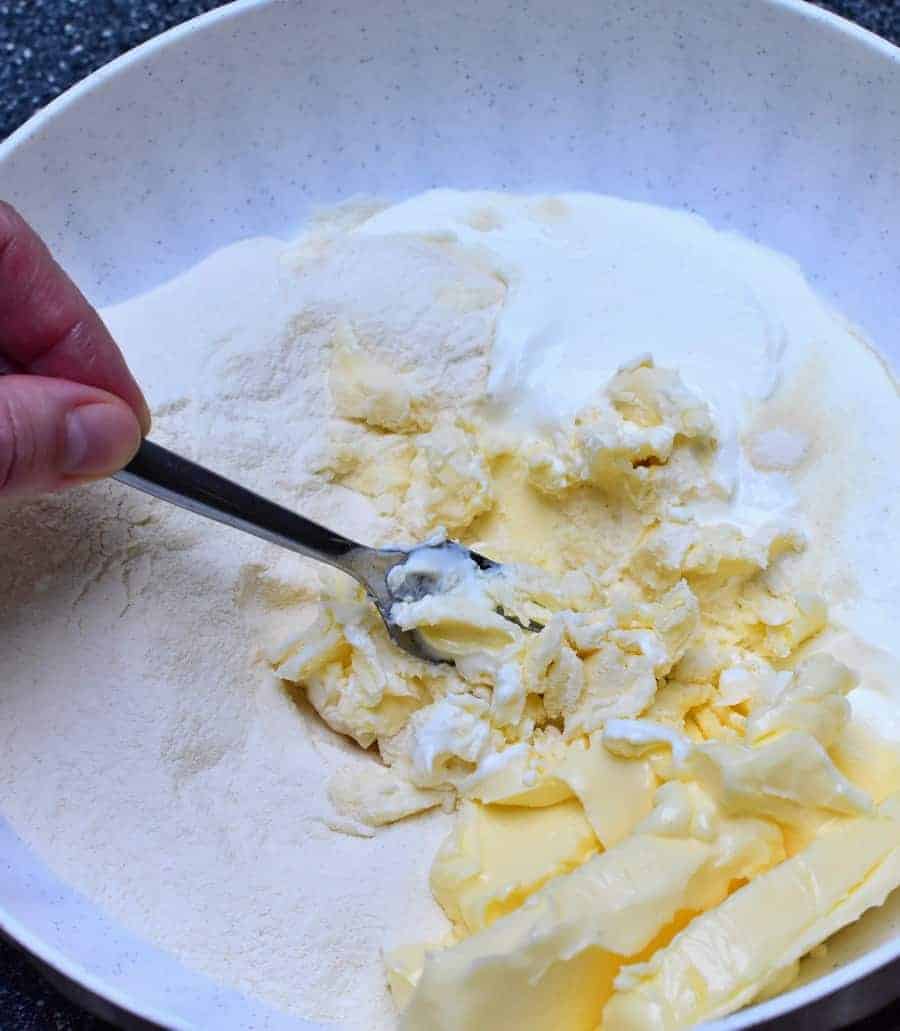
➜ 3 Ingredients Pastry
You only need 3 ingredients for this cheese pastry:
- farmer’s cheese (tvaroh, quark)
- flour
- non-salted butter
All ingredients are mixed together in a 1:1:1 ratio.
Preparation of the cheese pastry is very easy. The important thing is the softness and non-stickiness of the dough when finished.
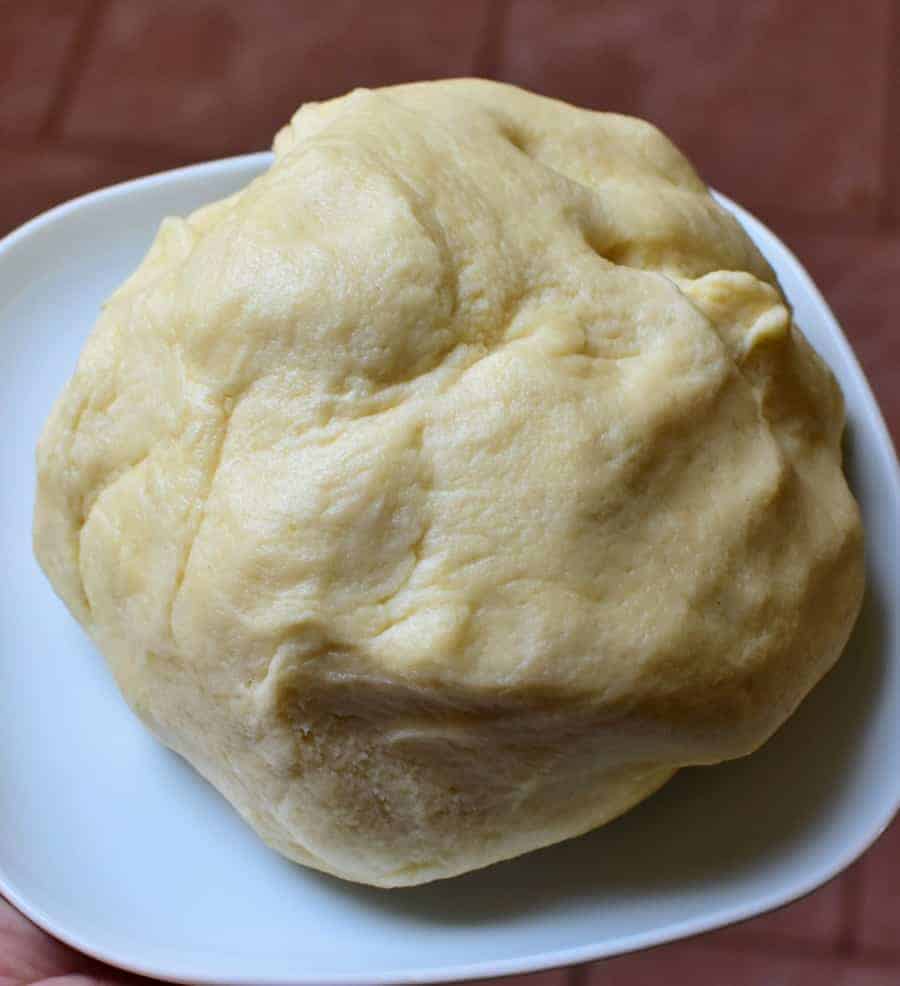
➜ Plum Butter Filling
Cheese pastry cookies are usually filled with tangy fruit jams. We like „švestková povidla“ (in the U.S. plum butter or powidl).
Plums are abundant in the Czech climate, and there’s a lot of plums on the trees in late summer.
The surplus plums which are not eaten are usually processed into plum butter, or slivovice, Sliwowitz (German word) – homebrew plum alcoholic drink. Czechs love slivovice! 🙂
If you buy the plum butter in a store, don’t buy anything with other fruit (like apples) added to it. This kind of plum butter is prone to leaking when baked.
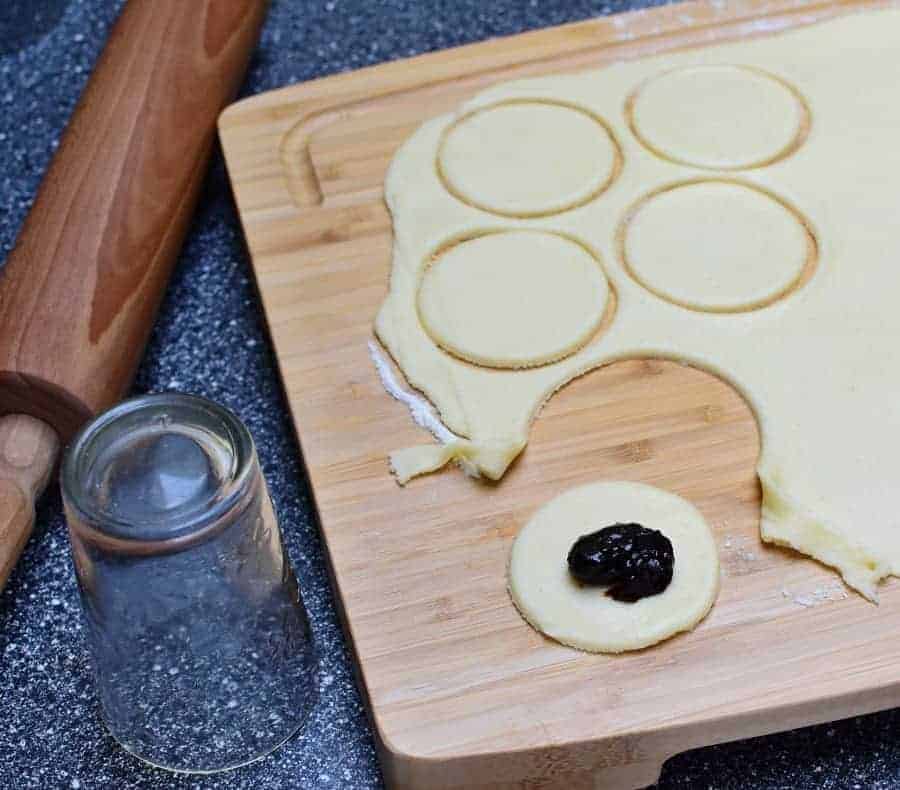
➜ Refrigerate the Cheese Pastry
You can freeze the cheese pastry for 20 minutes before baking, or if you’re not in a rush, you can put it into a fridge and leave it there overnight.
➜ Round Cookie Cutter
Cut circles, about 3 inches in diameter, out of the pastry. If you have a round cookie cutter, use it. Normal glass can also work wonders.
If you use a circle that’s too small, the cookie „šáteček“ would be hard to close – the base would be too small.
You don’t put too much of the filling in the cookie, just about ½ teaspoon – try it yourself. The opposite sides are folded together, and the edges are pressed together with a fork.
Aside from the fact that it will stick together quite nicely, it will also create a nice decorative edge.

➜ How Many „Šátečky“ Will Be Made With This Recipe?
I baked about 70 cookies from this recipe, and that means about 3 full trays about 16 x 22 inches in size.
Although the preparation is easy, the forming of the cookies can be quite time-consuming. They’re small, so the work can be quite hard and require fine motor skills.
Preparing the cookies can take about an hour so make sure you have enough time.
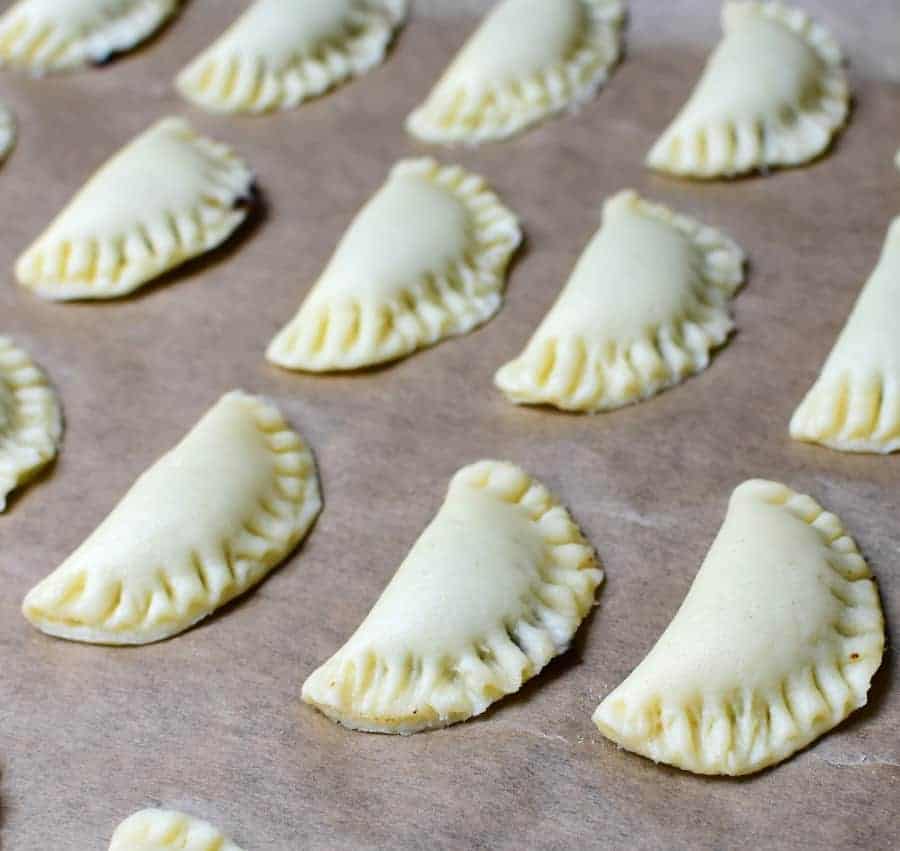
➜ Cook’s Tips
- Cheese pastry is translated in Czech as „tvarohové těsto. “
- This recipe is ideal for small cookies, filled with jams of various kinds. However, there is another variant of cheese pastry in the Czech Republic, which contains different ingredients.
Tried this recipe?
Leave a review down in the comments! ⭐⭐⭐⭐⭐
Follow me on Facebook and Pinterest. Subscribe to my newsletter. Send me any question about Czech cuisine to my e-mail. I love hearing your feedback!
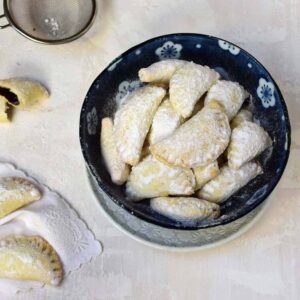
Povidlové šátečky – Czech Plum Butter Filled Cookies with Farmer´s Cheese Pastry
Ingredients
- 2 cups all-purpose flour (260 g)
- 9 ounces farmer´s cheese (250 g)
- 2 and ¼ sticks butter (250 g) unsalted, softened at room temperature
- pinch of salt
- 1 and ⅓ cups plum butter (400-430 g) sweetened
- 1 cup powdered sugar to coat
Instructions
- Put the softened butter, farmer's cheese, and flour into a bowl and knead until you have smooth cheese pastry. Knead first with a fork, then with your hands.
- Wrap the dough in a foil and let it rest for 15-30 minutes in a freezer.
- Heat the oven to 350 °F (180 °C).
- Roll a portion of the dough on a floured surface until it is 1/10 inch thick.
- Cut out circles about 3 inches in diameter.
- Place about a ½ teaspoon of plum jam in the middle, fold the opposite sides together until the edges slightly overlap, and then press them together with a fork.
- Place the cookies on a tray lined with parchment paper and bake them for about 20 minutes. When they are done, they should be light pink in color.
- When you take the cookies out of the oven, let them cool down for a while, and then coat them in powdered sugar.
Notes
- Makes about 70 cookies.
- These cookies are great, as their taste reminds us of Christmas. Try adding vanilla powder to the sugar when coating them!
DISCLAIMER: Because I come from Central Europe, my recipes are based on metric units such as grams or milliliters. Check out how I convert metric units to the U.S. system:
Conversion chartNutritional Estimate pro portion
More classic home-baked Czech treats:
- Linecké cukroví – Linzer Christmas cookies
- Meruňkový koláč – Czech apricot streusel sheet cake
- Míša řezy – Czech black & white sheet cake
- Carrot cookies – Mrkvánky




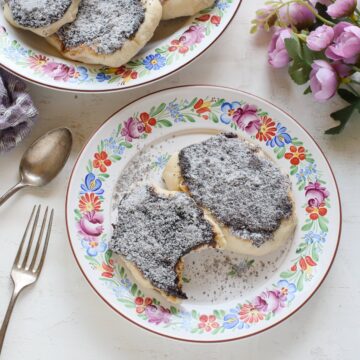
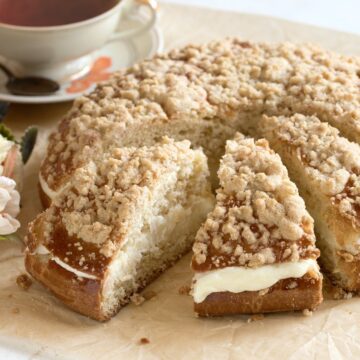
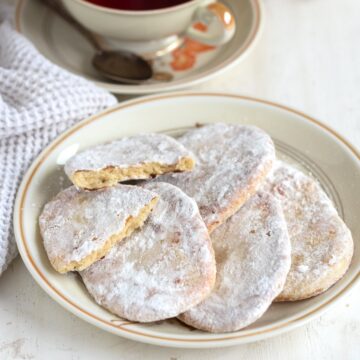
Al
Super 💖 the best
Petra Kupská
Thank you very much for your nice comment! 😊
Laura Fox
I have a question I wanted to make crescent filled cookies for a dear friend but am unable to find plum butter, for the filling can I use plum jam? Or maybe lingonberry jam? What do you think?
Petra Kupská
Laura, to make these crescent cookies, you need any jam that won't leak when baked in the oven. Unfortunately, I have no experience with the types of jams and marmalades in the US that might be suitable for this recipe. But I'm sure they do exist! Plum butter is often available at deli stores specializing in Polish or German food. Or try this online shop with Czech and Slovak goods: https://www.slovczechvar.com/